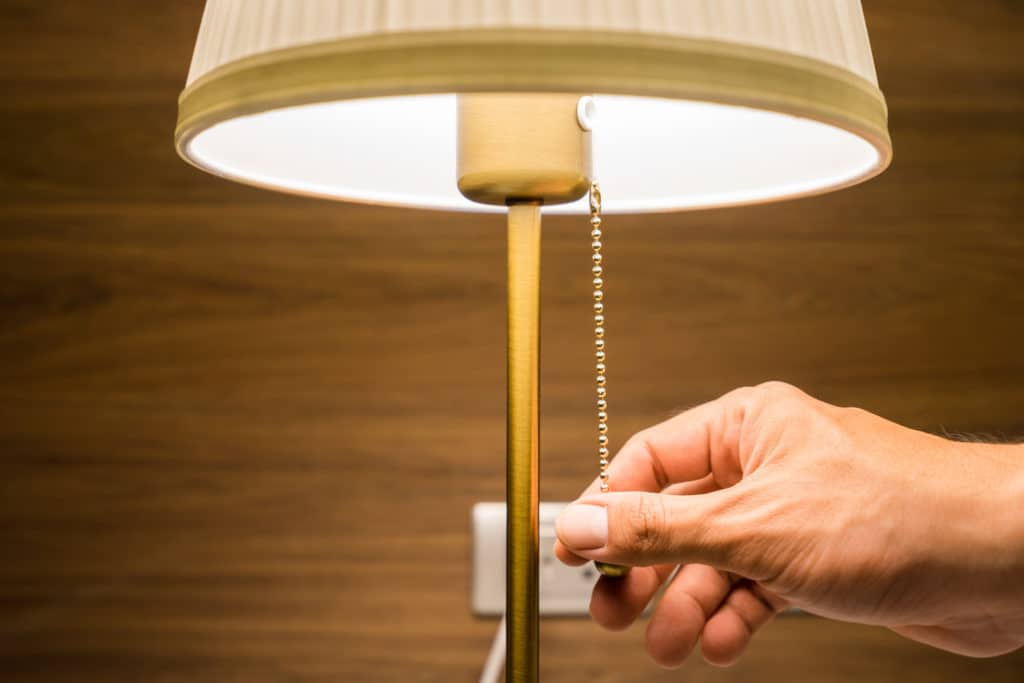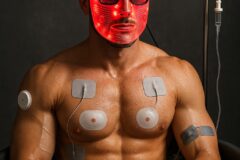When it comes to optimizing health and longevity, the lion’s share of attention is given to nutrition, fitness, relationships, and sleep.
But have you ever considered light exposure?
Inspired by what we’ve learned from Dr. Andrew Huberman on his episode about Using Light (sunlight, blue light, and red light) to Optimize Health, we were struck by the fact that light isn’t just about vision; that it’s also a potent influencer of our biology, health, and ultimately, our performance.
Light’s Profound Influence
Our relationship with light is the largest driver of our sleep-wake cycle (i.e. circadian rhythm). However, it’s also now clear that light can transform:
- gene expression
- hormone levels
- mood
Additionally, different wavelengths have different effects, with shortwave light (blue, UV) impacting the skin’s surface and longwave light (like red) reaching deeper tissues—even bone.
Managing Light Exposure to Combat Depression & Anxiety
Let’s begin with why light management is important.
For starters, blue light exposure (i.e. light from our phones, laptops, tablets, TVs) between the hours of 10pm and 4am has been shown to be pro-depressive.
Between 2005 and 2017, anxiety and depression disorders among young adults (those 18-30 years old) has increased 63%. While a host of reasons can be attributed to this rise, it’s hard to understate the impact of light.
Light impacts our circadian rhythm which plays a major role in several brain and behavioral processes, such as neurotransmission and hormone secretion.
Trouble sleeping is one of the most common symptoms of mood disorders like depression and anxiety and as little as just 2 hours of blue light exposure in the evening can impact the release of melatonin and disrupt sleep.
Harnessing Light for Peak Performance
View sunlight by going outside within 30-60 minutes of waking.
If you wake up before the sun is out and you want to be awake, turn on artificial lights and then go outside once the sun rises.
On bright cloudless days: view morning sun for 10 min; cloudy days: 20 min; very overcast days 30-60 min. If you live someplace with very minimal light, consider an artificial daytime simulator source.
Don’t wear sunglasses for this practice if you safely can, but contact lenses and eyeglasses are fine.
And NO, you don’t have to look directly at the sun, and never look at ANY light so bright it is painful to view!
That said, you can’t wear a brimmed hat, sunglasses and remain in the shade and expect to “wake up” your circadian clock.
***Do this again in the late afternoon, prior to sunset.***
Avoid viewing bright lights—especially bright overhead lights between 10 pm and 4 am.
Here is a simple rule: only use as much artificial lighting as is necessary for you to remain and move about safely at night.
Blue blockers can help a bit at night but still dim the lights. Viewing bright lights of all colors are a problem for your circadian system.
Candlelight and moonlight are fine.
Refrain from blue or UV light exposure after 8 pm.
This is especially important for those prone to mood swings or depression.
Devices, screens, and certain LED lights can emit these wavelengths, so consider screen filters or specialized blue light blocking glasses.
I (Dennis) have used Spectra 479’s clip on blue blockers for years now, they attach directly to my prescription lenses.
Navigating Night-time Disruptions:
If you wake up in the middle of the night, avoid flipping on bright lights.
Instead, consider using longwave (red) light, which doesn’t disrupt melatonin—a critical sleep hormone.
Red light is also ideal for night owls, shift workers, or new parents up for childcare.
Being awake at night is sometimes a necessity. In such cases, red light is the top choice.
Final Thoughts
Optimizing light exposure, understanding its nuances, and aligning it with your daily routine could be the game-changer you’ve overlooked.
It’s not just about productivity but also about well-being. With the right light protocols, you can shine the brightest in both your professional and personal life.
Disclaimer: The information provided in this newsletter is for educational purposes only and should not be considered as medical advice. Always consult with your healthcare provider before making any decisions or changes to your healthcare plan.






